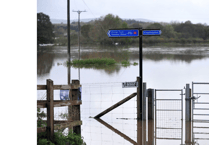GETTING on for half the year’s expected rainfall in Devon fell in the first three months of the year, Met Office figures have revealed.
The January to March rainfall total for Devon was 520.5mm where the annual average is 1252.66mm, said the Met Office.
It cautioned however, that it was too early to predict any record breaking figures.
Despite the almost constant rain since the start of meteorological spring on 1 March, records show that many parts of West Devon already having had their average rainfall for spring.
Despite this, the picture isn’t as gloomy as 2023.
Winter, autumn and summer in 2023 were all above average for rainfall in Devon with spring 2023 being the sixth wettest on record, July the eighth wettest, and 2023 being the sixth wettest year ever.
Autumn 2023 also had the largest number of severe weather warnings issued since impact-based warnings were introduced in 2011.
This year however, it has been the fourth wettest February and the eighth wettest March since records began and the eighth wettest winter.
The Higher Morwell weather station in the Tamar Valley even recorded the longest period of wet weather as 21 days, with the highest rain rate of 62mm/hr on 4 April.
The 2023-24 El Niño event is said to account for the recent weather movements. It peaked during November to January and is now weakening and looks set to wane around May with a return to more usual patterns of weather patterns according to the World Meteorological Organization.
One positive outcome of the rain is that all five reservoirs that serve Devon and Cornwall are at 97 per cent capacity or above after dropping to record lows following the 2022 drought.



.jpeg?width=209&height=140&crop=209:145,smart&quality=75)
Comments
This article has no comments yet. Be the first to leave a comment.